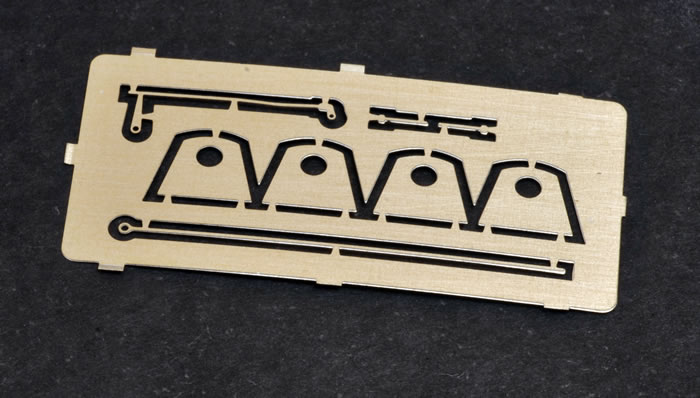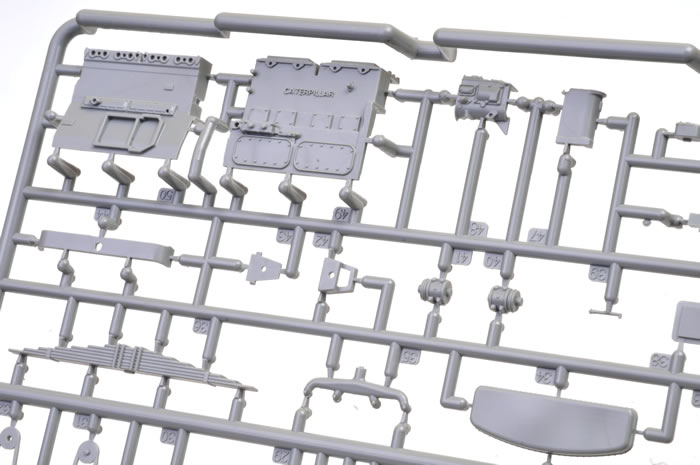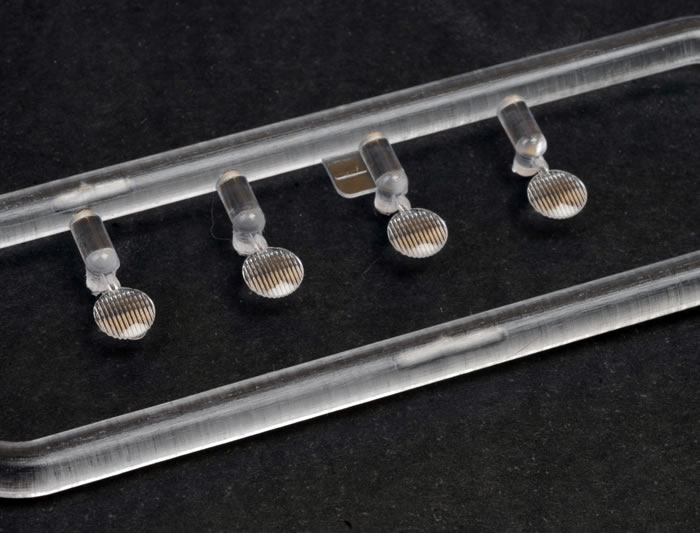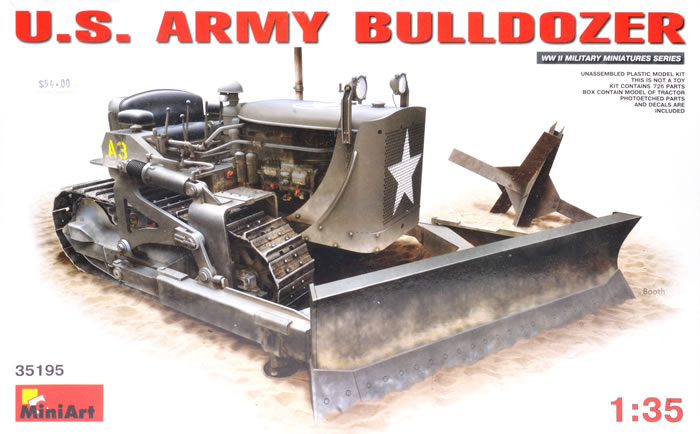|
|
|
|
US Army Bulldozer
MiniArt, 1/35 scale
Reviewed by Brett Green
Summary
| Stock Number and Description | MiniArt Kit No. 35195 - US Army Bulldozer |
| Scale: | 1/35 |
| Media and Contents: | 753 light grey plastic parts, four parts in clear plastic, a modest photo-etched fret and decals for three vehicles. |
| Price: | AUD$54.00 available online from Creative Models Australia |
| Review Type: | First Look |
| Advantages: | Very high level of detail; excellent moulding quality; impressive workable tracks; versatile subject. |
| Disadvantages: | |
| Recommendation: | Highly Recommended |
FirstLook
The Caterpillar D4 track-type tractor is a small bulldozer manufactured by Caterpillar Inc.
Caterpillar first introduced the RD4 in 1936 as the diesel follow-upto the successful CAT 30 petrol model.
The RD4 originally weighed in at 10,000 pounds, and used Caterpillar's D4400 engine, an inline four-cylinders, with a 4.25x5.50 inch bore and stroke.
In 1935 Caterpillar had started the naming convention of "RD" for diesel or "R" for regular petrol, followed by a number to indicate the relative engine size. In 1937 the "R" was dropped, and just a "D" was used for the diesel versions.
At the time of introduction of the RD4, the D4400 engine produced about 43 HP at the drawbar so the 4 indicated the relative engine power. The D4 U series was fitted with the more powerful D315 engine. The later D4 series engines quickly increased in power, so the number "4" just became a figure of merit rather than indicating actual engine power.*

During the Second World War, the Caterpillar D4 Bulldozer was used widely by Allied forces in all theatres for clearing battlefields of obstacles and making roads accessible by clearing rubble and filling in bomb craters. They were also used in military construction and engineering roles.
The Caterpillar D7 was similar, but had two return rollers per side instead of one.
Mini Art has recently started a new family of WWII military bulldozers and tractors, both armoured and un-armoured.
One of their newest releases is simply labelled U.S. Army Bulldozer, but it is indeed a Caterpillar D7. This model will offer many military and civilian possibilities.
The first impression of the box is its sheer weight. It is heavy, and opening the box reveals a dense jungle of sprues backed into a single clear plastic bag. I suppose this is good for the environment but it does increase the risk of scuffing and parts loss.
There are also very few large recognisable parts.
The kit is made up from a whopping 753 light grey plastic parts, four parts in clear plastic, a modest photo-etched fret and decals for three vehicles.

360 of the grey plastic parts are for the four-part track links. Each link is made up from two substantial sides, a linking pin and a top plate. Each full run is only 36 links, so you’ll have plenty of spares to play with.

Construction of the engine is covered in the first 20 steps of the instructions. The engine is beautifully detailed, and your efforts won’t go to waste, as it will be quite visible through the open sides of the body.

The wheels and running gear are also thoroughly detailed, with plastic (mercifully non-workable) springs, wheels, sprockets, covers and other various details.
The open cab is fairly simple, reflecting the nature of the real vehicle.
The final steps of the instructions deal with the big dozer blade.

Headlight lenses are supplied in clear plastic.

The decals are well printed and colours look good.

All three vehicles are finished in overall Olive Drab. Two are attached to US Army Engineer units in France, 1944 and the CBI, 1944; while the third option represents a vehicle with the Royal Engineers Battalion, 2nd Canadian Corps, Falaise, France in the Summer of 1944.
Conclusion
This is a remarkably detailed model of a fascinating vehicle that has a wide variety of possibilities, either as part of a diorama or as a standalone model.
The large number of small detail parts will demand care in construction, but any experienced military modeller should be able to handle this kit.
You will certainly have a very complete Caterpillar D4 Bulldozer when you’ve finished!
Historical summary courtesy of Wikipedia
Thanks to Creative Models Australia for the sample www.creativemodels.com.au
















